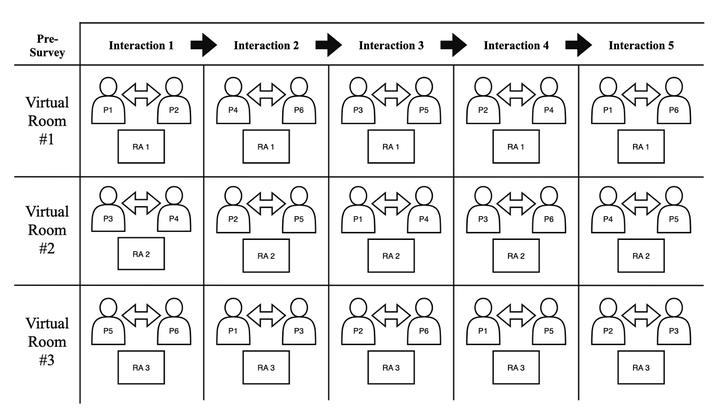CMORR

This project was aimed at developing an online method to study interpersonal perceptions and decisions made during social interactions. My interest in studying real-world social interactions among people from diverse populations motivated me to develop a new methodological approach, the computer mediated online round robin (CMORR; “see-more”). CMORR leverages the widespread availability of computers with videoconferencing capabilities to conduct face-to-face round-robin studies online, making it logistically viable to study interactions among members of diverse populations.
In a CMORR study, participants engage in a series of dyadic interactions with other participants in virtual rooms. After each interaction, the participants both provide impressions of their interaction partners. The interactions are recorded, providing a wealth of behavioral data and potential stimuli for future studies. To reach the widest range of participants possible, I made the whole paradigm run in a web browser by embedding the virtual rooms in a web-based survey platform using videoconferencing software that does not require downloads.
To determine if CMORR was an appropriate method to study fundamental questions about interpersonal perception, I collected impressions of personality traits in a CMORR and an in-person study, both with undergraduate samples so that I could evaluate the new method in a well-studied population. A social relations model analysis revealed that the impressions formed in the studies had similar variance structure and levels of accuracy. These findings are reported in a forthcoming publication. These results demonstrate that modern videoconferencing technology is rich enough to study the impression formation process and support the use of CMORR to study interpersonal perceptions.
The CMORR method can be used to conduct online social interaction studies with round robin, dyadic, and both full and half block designs. Researchers who want to conduct a CMORR study, can find the code we use to embed the jitsi.org videoconference rooms into Qualtrics and a complete guide to running the study here in the CMORR Manual. I have recently completed data collection for a CMORR study with a community sample of 300 participants recruited from Prolific. If you have any questions about using CMORR in your own work, please contact me.